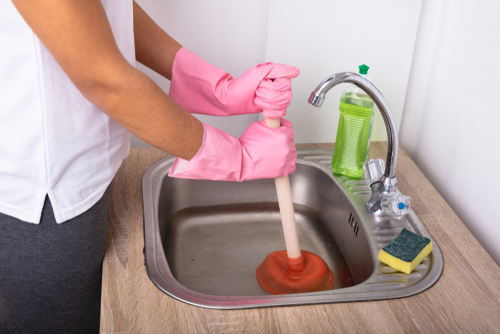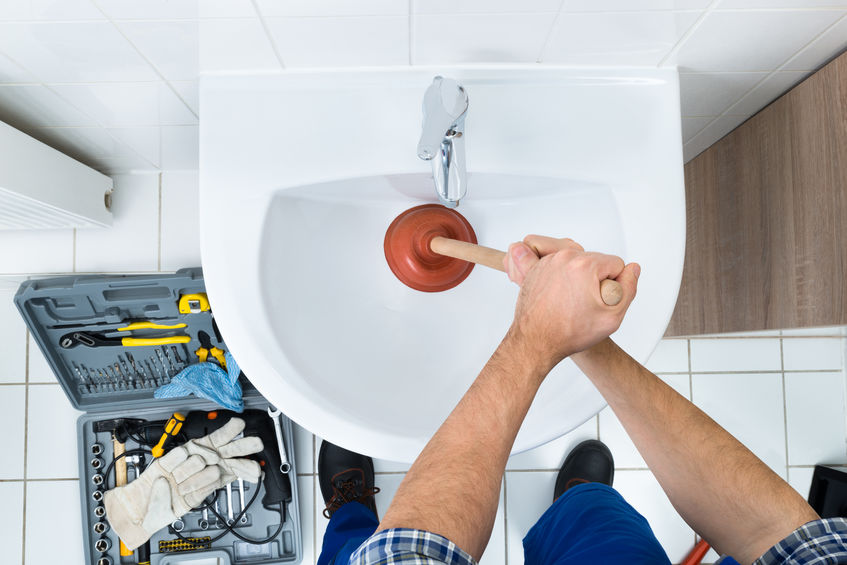Improving Plunger and Drain Cleaners: Pro Methods
Improving Plunger and Drain Cleaners: Pro Methods
Blog Article
This article down the page in relation to A Guide to Plungers (and How to Use Them) is extremely enlightening. Have a go and draw your own personal assumptions.

Introduction
Proper maintenance of household drains is essential for preventing obstructions and making certain smooth water circulation. One of the key devices in every home owner's toolkit is the bettor, together with various drainpipe cleaners developed to take on persistent clogs effectively. This write-up checks out how to utilize plungers and drainpipe cleaners properly to keep your drains pipes streaming openly.
Section 1: Recognizing Plungers
Sorts of Plungers
There are several sorts of plungers offered, each developed for various kinds of drains pipes and clogs. One of the most common types consist of mug plungers, flange plungers, and accordion bettors.
Just How Plungers Work
Plungers work with the concept of creating pressure and suction to remove obstructions. When properly applied over a drain, they produce a vacuum that can take out particles or separate clogs.
Picking the Right Bettor
Picking the appropriate bettor relies on the sort of drainpipe and the nature of the obstruction. Mug bettors are suitable for sinks and bathtubs, while flange bettors are better suited for toilets due to their layout.
Usual Errors with Plungers
Avoiding these mistakes makes certain reliable plunging: incorrect seal around the drain, not enough pressure, and not clearing bordering debris.
Section 2: Making Use Of Plungers Efficiently
Preparation
Before diving, make sure the plunger covers the drainpipe completely and creates a tight seal. Clear any kind of visible particles around the drain opening.
Method
Start with gentle diving movements to construct suction. Increase stress progressively, utilizing a constant rhythm. Repeat as required up until the drainpipe clears.
Repairing Tips
If diving doesn't work, try changing the seal, applying oil jelly for a far better seal, or making use of a various sort of bettor.
Area 3: Recognizing Drain Cleaners
Sorts Of Drain Cleansers
Drain pipes cleansers can be chemical or chemical. Chemical cleansers make use of solid chemicals to liquify blockages, while chemical cleansers utilize natural enzymes to break down organic matter.
How Drain Cleaners Job
Chemical cleansers respond with blockages to dissolve them, while enzymatic cleansers break down natural materials like hair and grease without damaging pipelines.
Security Considerations
Constantly put on gloves and eye protection when making use of chemical drainpipe cleaners. Ensure appropriate ventilation and adhere to maker instructions carefully.
Eco-Friendly Alternatives
Take into consideration utilizing vinegar and cooking soda or enzyme-based cleansers for environmentally friendly alternatives that are much safer for pipelines and the environment.
Area 4: Using Drain Cleaning Company Efficiently
Application Methods
Put chemical cleaners directly right into the drainpipe opening. Allow them to help the advised time prior to flushing with hot water. Chemical cleansers need to sit overnight.
Safety measures
Stay clear of mixing different kinds of cleansers, as this can create poisonous fumes. Never ever make use of chemical cleansers in conjunction with a plunger, as splashing can occur.
Dealing With Stubborn Clogs
For persistent clogs, consider using a pipes serpent or calling an expert plumbing technician to avoid damage to pipelines.
Verdict
To conclude, comprehending how to make use of bettors and drain cleansers successfully is vital for maintaining healthy and balanced pipes systems. By choosing the right devices and techniques, homeowners can deal with minor obstructions and prevent significant plumbing concerns down the line.
A Guide to Plungers (and How to Use Them)
Why to Use a Plunger
Many people’s first instinct when they have a clog is to pour store-bought drain cleaner down the drain, but this is actually harmful to your pipes. Liquid drain cleaners are full of caustic chemicals that eat away at clogs to get rid of them, but the problem is they also eat away at your pipes. Using store-bought drain cleaners will eventually cause leaks in your pipes, which is much more difficult and costly to fix than a simple clog.
How to Use a Plunger
First things first, you need to know the different kinds of plungers and how they work. There are two types of plunger, cup plungers and flange plungers.
Cup Plunger
Cup plungers are the most common style of plunger, with a rubber cup attached to a long wooden handle. This type of plunger is best for using on flat-surface drains like those found in bathtubs, showers, and sinks. They can be used on the curved drains of toilets but are not as effective as flange plungers for this job.
Flange Plunger
Flange plungers look like cup plungers but have an additional rubber ring, or flange, around the cup. The rubber flange allows you to get a good seal around a curved drain, so these plungers are especially effective on toilets. They can be used on flat-surface drains as well, but are not as effective as cup plungers. For the best results you should have a flange plunger for toilets and a cup plunger for sinks, showers, and tubs.
Plunger Technique
For sinks, tubs, and showers, use a cup plunger. If there is a lot of water in the sink or tub, you may want to remove some with a bucket to reduce the mess while you plunge. Place the cup of the plunger securely over the whole drain and gently push down on the handle in order to create a seal. Now you can thrust the plunger down in quick, repetitive movements, making sure not to lift the handle up enough to break the seal. Continue for about 30 seconds.
For toilets, use a flange plunger. Wait a few minutes after flushing the toilet to let the water level go down. Insert the plunger into the toilet drain so that the rubber flange is inside the drain, creating a seal. Move the plunger up and down in quick thrusts for about 30 seconds.

Application Methods
Put chemical cleaners directly right into the drainpipe opening. Allow them to help the advised time prior to flushing with hot water. Chemical cleansers need to sit overnight.
Safety measures
Stay clear of mixing different kinds of cleansers, as this can create poisonous fumes. Never ever make use of chemical cleansers in conjunction with a plunger, as splashing can occur.
Dealing With Stubborn Clogs
For persistent clogs, consider using a pipes serpent or calling an expert plumbing technician to avoid damage to pipelines.
Verdict
To conclude, comprehending how to make use of bettors and drain cleansers successfully is vital for maintaining healthy and balanced pipes systems. By choosing the right devices and techniques, homeowners can deal with minor obstructions and prevent significant plumbing concerns down the line.
A Guide to Plungers (and How to Use Them)
Why to Use a Plunger
Many people’s first instinct when they have a clog is to pour store-bought drain cleaner down the drain, but this is actually harmful to your pipes. Liquid drain cleaners are full of caustic chemicals that eat away at clogs to get rid of them, but the problem is they also eat away at your pipes. Using store-bought drain cleaners will eventually cause leaks in your pipes, which is much more difficult and costly to fix than a simple clog.
How to Use a Plunger
First things first, you need to know the different kinds of plungers and how they work. There are two types of plunger, cup plungers and flange plungers.
Cup Plunger
Cup plungers are the most common style of plunger, with a rubber cup attached to a long wooden handle. This type of plunger is best for using on flat-surface drains like those found in bathtubs, showers, and sinks. They can be used on the curved drains of toilets but are not as effective as flange plungers for this job.
Flange Plunger
Flange plungers look like cup plungers but have an additional rubber ring, or flange, around the cup. The rubber flange allows you to get a good seal around a curved drain, so these plungers are especially effective on toilets. They can be used on flat-surface drains as well, but are not as effective as cup plungers. For the best results you should have a flange plunger for toilets and a cup plunger for sinks, showers, and tubs.
Plunger Technique
For sinks, tubs, and showers, use a cup plunger. If there is a lot of water in the sink or tub, you may want to remove some with a bucket to reduce the mess while you plunge. Place the cup of the plunger securely over the whole drain and gently push down on the handle in order to create a seal. Now you can thrust the plunger down in quick, repetitive movements, making sure not to lift the handle up enough to break the seal. Continue for about 30 seconds.
For toilets, use a flange plunger. Wait a few minutes after flushing the toilet to let the water level go down. Insert the plunger into the toilet drain so that the rubber flange is inside the drain, creating a seal. Move the plunger up and down in quick thrusts for about 30 seconds.

We had been made aware of that article about How To Use Your Toilet Plunger Correctly in 5 Easy Steps from a pal on our other blog. Are you aware of somebody else who is involved in A Guide to Plungers (and How to Use Them)? Feel free to promote it. Thank-you for going through it.
Suggested Site Report this page